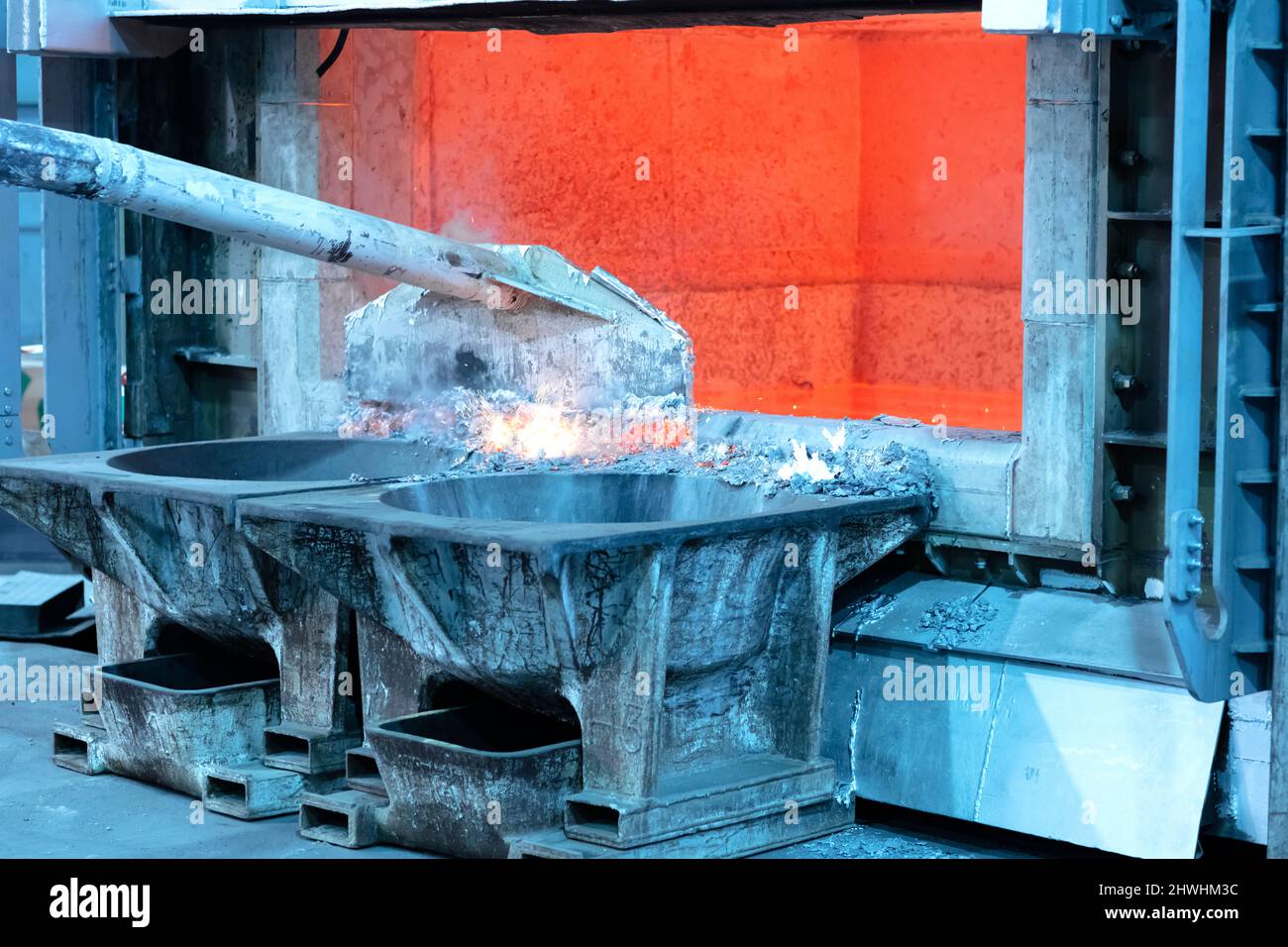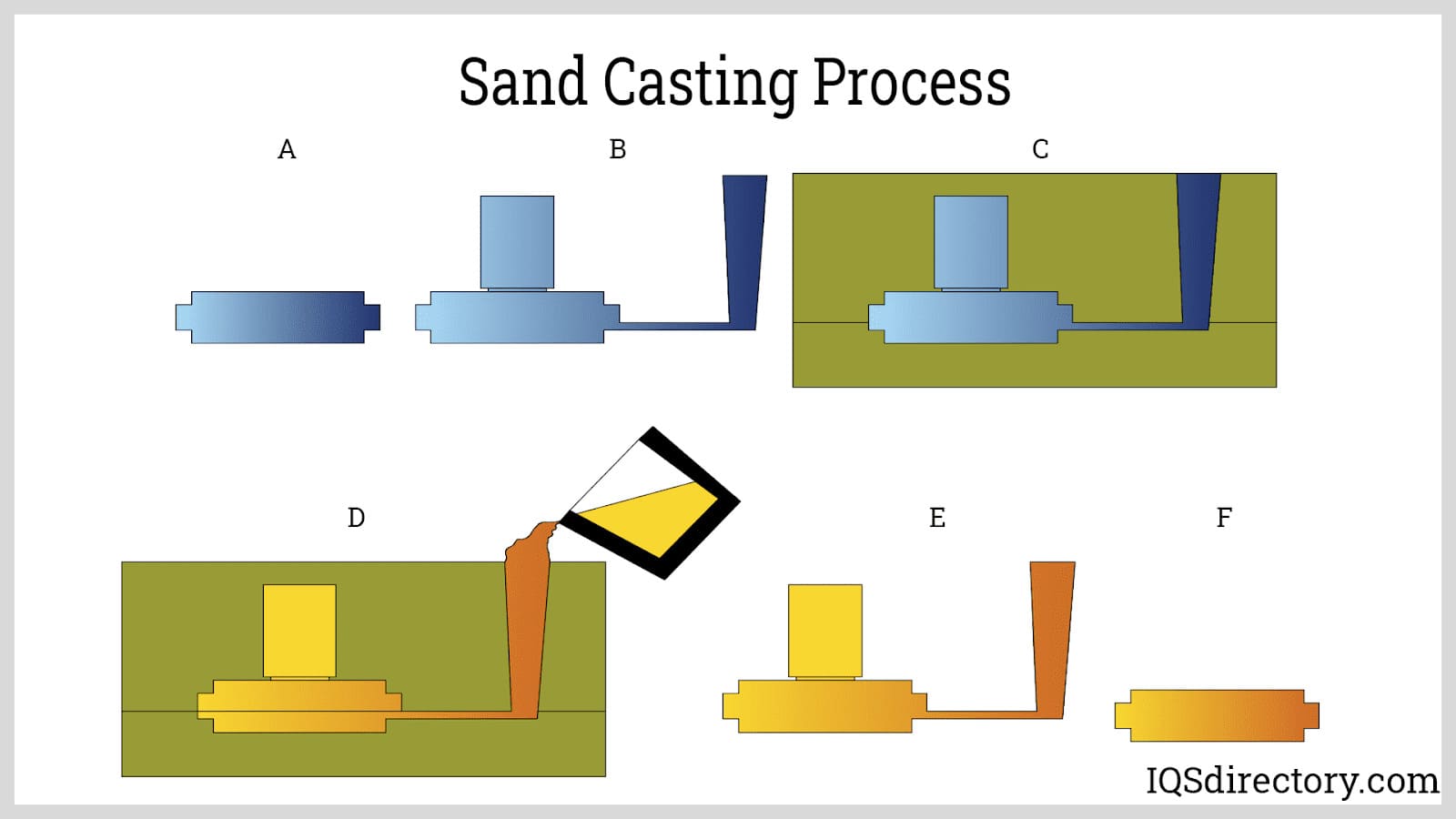A Comprehensive Overview to the Strategies Made Use Of in Aluminum Foundry Procedures
Aluminum Foundry procedures utilize different casting methods, each with unique processes and applications. Understanding these methods is vital for enhancing production and achieving desired product residential properties. From sand casting to die casting, the selections offered can significantly impact efficiency and price. As modern technology developments, so as well do these techniques, motivating a more detailed assessment of their constraints and benefits. The implications of these growths call for additional exploration.
Review of Aluminum Casting Techniques
Aluminum casting strategies include a selection of approaches utilized to shape liquified Aluminum right into desired kinds. These methods are critical in the manufacturing and design markets, using flexibility and efficiency. Major strategies consist of pass away casting, which employs high-pressure to infuse Aluminum into mold and mildews for precision components, and gravity casting, where liquified Aluminum is poured into mold and mildews intoxicated of gravity, enabling larger, much less complex forms. Financial investment casting, an additional technique, entails producing a wax pattern coated in ceramic, offering high dimensional precision for intricate styles. Additionally, long-term mold casting makes use of multiple-use mold and mildews, improving production performance and reducing waste. Each strategy deals with details applications, balancing aspects such as cost, manufacturing volume, and product properties. As industries progress, advancements in these casting techniques remain to boost the quality and performance of Aluminum elements, placing them as crucial processes within contemporary manufacturing.
Sand Spreading: Refine and Applications
Sand spreading is a widely utilized approach in the Foundry sector, known for its simplicity and adaptability. Aluminum Foundry. This process includes producing a mold and mildew from a blend of sand and a bonding representative, typically clay. The mold and mildew is developed around a pattern, which is a reproduction of the preferred end product. As soon as the mold and mildew is ready, liquified Aluminum is poured into the tooth cavity, permitting it to strengthen right into the preferred form
One of the main benefits of sand casting is its capacity to produce complicated geometries and large parts, making it suitable for different applications, including automobile parts, equipment elements, and ornamental things. In addition, sand spreading can accommodate different Aluminum alloys, improving its versatility. The procedure is cost-efficient for reduced to medium production runs, as it does not require expensive tooling. In general, sand casting remains a basic method in Aluminum Foundry operations due to its performance in conference diverse production requirements.
Die Spreading: Benefits and Limitations
While die casting is typically compared to sand spreading, it uses distinct advantages and limitations that make it appropriate for particular applications in the Aluminum Foundry industry. One considerable advantage of die spreading is its capacity to create complex forms with high dimensional accuracy and excellent surface area finish. This procedure is particularly beneficial for mass manufacturing, as it enables faster cycle times and reduced labor prices. Furthermore, pass away casting lessens material waste, boosting general efficiency.
Pass away spreading additionally has constraints. The first tooling costs are relatively high, making it less viable for little production runs. Furthermore, the process is best matched for steels with low melting points, which can limit material choices. Pass away casting is likewise minimal relating to the maximum size of the components generated, as larger components may call for alternative approaches. Stabilizing these variables is important for establishing the proper application of die casting in the Aluminum Foundry field.
Financial Investment Spreading: Accuracy and Detail
Financial investment casting is a highly precise manufacturing process that permits for detailed layouts and great information in Aluminum elements. This strategy uses considerable benefits, consisting of enhanced dimensional precision and lowered machining needs. Its applications span numerous sectors, highlighting its versatility and efficiency in creating complicated parts.
Process Review
The financial investment casting process is renowned for its capacity to generate intricate forms and high-precision parts. This approach starts with creating a wax pattern, which is after that coated with a ceramic shell. When the shell solidifies, the wax is dissolved, leaving a specific dental caries for the molten steel. The Aluminum is poured into this cavity, catching the fine information of the original pattern. After cooling down, the ceramic shell is escaped, disclosing the cast component. Any type of required ending up job, such as machining or surface therapy, is carried out to achieve the preferred requirements. This procedure is particularly beneficial for complex geometries that are challenging to achieve with traditional casting techniques, making certain both top quality and precision in the last item.
Advantages of Precision
Accuracy in financial investment spreading provides significant advantages, making it a favored choice for manufacturing intricate elements. This method makes it possible for the production of intricate forms with tight tolerances, decreasing the need for comprehensive machining and reducing material waste. The ability to attain high dimensional accuracy equates to an exceptional fit and finish, boosting the general quality of the final item. In addition, financial investment casting permits the consolidation of great information, which is necessary for elements needing intricate layouts. The procedure also sustains the use of numerous Aluminum alloys, further expanding its applicability. On the whole, the precision provided by financial investment casting not just improves the functional and aesthetic characteristics of elements however additionally adds to enhanced effectiveness in manufacturing cycles.
Applications in Sector
While many producing procedures exist, financial investment spreading stands apart for its adaptability throughout various markets, specifically in sectors demanding high accuracy and in-depth elements. This spreading approach is commonly made use of in aerospace, automobile, and clinical fields, where elaborate layouts and tight tolerances are essential. As an example, aerospace elements take advantage of investment spreading's capacity to produce complex geometries that decrease weight without compromising structural integrity. Likewise, the automobile market employs this technique to manufacture engine components that call for sturdiness and precision. In the medical sector, financial investment spreading allows the production of medical instruments and implants that must fulfill rigid high quality standards. On the whole, investment casting significantly boosts product performance and integrity, making it a very useful method in modern production applications.
Comparison of Casting Methods
 The contrast of casting techniques discloses unique benefits and applications across different methods - Aluminum Foundry. Sand spreading is frequently commemorated for its versatility and cost-effectiveness, while die spreading is identified for its effectiveness and accuracy in generating high volumes. Investment spreading, formerly discussed, showcases its distinct capacity to create detailed designs, even more stressing the varied capabilities of each technique in Aluminum Foundry operations
The contrast of casting techniques discloses unique benefits and applications across different methods - Aluminum Foundry. Sand spreading is frequently commemorated for its versatility and cost-effectiveness, while die spreading is identified for its effectiveness and accuracy in generating high volumes. Investment spreading, formerly discussed, showcases its distinct capacity to create detailed designs, even more stressing the varied capabilities of each technique in Aluminum Foundry operationsSand Spreading Advantages
Sand spreading offers several benefits when contrasted to various other casting methods, making it a preferred option in numerous production applications. Among the primary benefits is its low price, as the products required, such as sand and metal, are economical and easily offered. In addition, sand casting allows for greater style versatility, making it possible for the production of complex shapes and large components that may be challenging to achieve with other techniques. The process also accommodates a variety of metal alloys, including Aluminum, enhancing its flexibility. Additionally, sand mold and mildews can be conveniently fixed or changed for succeeding casts, why not try these out making it reliable for both huge and tiny production runs. Generally, these benefits add to sand casting's appeal in the Foundry sector.
Pass Away Spreading Techniques
Die spreading strategies stick out as a very efficient method for creating metal components, specifically when contrasted to typical spreading techniques like sand casting. This procedure includes forcing liquified Aluminum right into a mold under high stress, causing exact dimensions and a smooth surface area finish. Unlike sand casting, which calls for comprehensive finishing job, die casting minimizes post-production handling, improving overall performance. Furthermore, die spreading can fit intricate geometries, permitting for complex designs that would certainly be challenging to accomplish with other techniques. The speed of manufacturing is one more advantage; pass away casting can create large quantities of components in a shorter duration. Overall, the mix of accuracy, performance, and design flexibility makes pass away casting a recommended choice in contemporary Aluminum Foundry procedures.
Investment Spreading Applications
Financial investment spreading, typically described as lost-wax spreading, supplies distinct advantages over other casting techniques, specifically relative to accuracy and surface finish. This technique permits the development of detailed forms and great information that are hard to attain with sand or pass away spreading. In addition, financial investment spreading generates parts with superior dimensional precision, reducing the demand for extensive machining. Its versatility makes it suitable for various industries, consisting of aerospace, auto, and clinical tools, where top quality components are necessary. Compared to die casting, which can be limited by mold and mildew intricacy, financial investment spreading stands out in producing complex geometries without compromising structural integrity. The choice of investment spreading ends up being increasingly favorable for applications requiring high efficiency and dependability.
Quality Control in Aluminum Foundry Operations
Exactly how can Aluminum factories guarantee the best in their products? Executing strenuous quality assurance measures is essential. Shops usually start by developing clear specifications for the Aluminum alloys made use of, ensuring they meet sector standards. Continual monitoring throughout the melting and pouring procedures helps recognize any type of inconsistencies from preferred chemical compositions.
Aesthetic inspections and non-destructive testing approaches, such as ultrasonic or X-ray examinations, are frequently used to spot interior issues or disparities in spreadings. Additionally, statistical procedure control techniques track production information, permitting early recognition of possible issues.
Routine training and this article qualification of personnel in quality control techniques are important for preserving high requirements. Ultimately, implementing feedback loops from consumers can aid foundries fine-tune their procedures and boost product top quality. By adhering to these methods, Aluminum factories can constantly supply top notch items that fulfill or go beyond client expectations.
Future Patterns in Aluminum Casting Technology
Developments in Aluminum casting technology are positioned to improve the market landscape, building upon recognized quality control practices. Technologies such as additive production and wise Foundry services are emerging, enabling boosted style versatility and reduced waste. The integration of fabricated knowledge and artificial intelligence in process surveillance permits real-time modifications, boosting efficiency and item quality.
Sustainability stays a vital focus, with a focus on recycling scrap Aluminum and lowering energy intake. Advanced alloy solutions are being established to maximize performance while minimizing ecological effect. The adoption of automated systems, consisting of robotics for managing and pouring, assures to improve office security and accuracy.
Electronic doubles are acquiring traction, permitting for virtual simulations that assist in better decision-making and anticipating upkeep. As these trends progress, they will likely create a much more reliable, sustainable, and technically progressed Aluminum casting market, establishing new requirements for top quality and performance.
Often Asked Inquiries
What Precaution Should Be Absorbed Aluminum Foundry Operations?
In Aluminum Foundry operations, essential precaution consist of personal protective devices, correct ventilation, regular training, danger analyses, emergency preparedness, and adherence to procedures to alleviate threats related to molten metal and heavy machinery.
Just How Is Recycled Aluminum Made Use Of in Foundry Processes?
Recycled Aluminum is typically made use of in Foundry procedures to lower ecological effect and manufacturing prices. It undertakes melting and refining, enabling producers to create high-quality items while preserving energy and lessening waste in the Aluminum lifecycle.
What Equipment Is Important for Aluminum Casting?
Essential devices for Aluminum casting consists of heating systems for melting, molds for shaping, pouring ladles, cooling systems, and ending up tools. Each part plays a critical role in making certain the effectiveness and quality of the spreading process.
Exactly How Do Environmental Laws Impact Aluminum Foundries?
Ecological policies considerably influence Aluminum foundries by imposing restrictions on exhausts and waste management. Conformity calls for investment in cleaner modern technologies, which can boost operational prices yet ultimately advertises sustainability and lowers the ecological footprint of the sector.

What Prevail Defects in Aluminum Castings and Their Solutions?
Common defects in Aluminum castings consist of porosity, surface, and contraction flaws. Solutions entail optimizing melt quality, managing air conditioning rates, and utilizing correct mold and mildew style, making certain better honesty and performance of the last cast products.
 Major methods consist of pass away spreading, which utilizes high-pressure to inject Aluminum into molds for accuracy components, and gravity casting, where molten Aluminum is poured right into molds under the impact of gravity, enabling for bigger, much less complicated shapes. While die spreading is often contrasted to sand casting, it supplies distinctive advantages go to my site and restrictions that make it suitable for particular applications in the Aluminum Foundry industry. Sand spreading is usually commemorated for its adaptability and cost-effectiveness, while die casting is acknowledged for its performance and precision in generating high quantities. Pass away spreading techniques stand out as a very reliable technique for producing steel parts, especially when contrasted to traditional casting approaches like sand casting. Compared to die casting, which can be restricted by mold and mildew complexity, financial investment spreading succeeds in producing complicated geometries without jeopardizing architectural integrity.
Major methods consist of pass away spreading, which utilizes high-pressure to inject Aluminum into molds for accuracy components, and gravity casting, where molten Aluminum is poured right into molds under the impact of gravity, enabling for bigger, much less complicated shapes. While die spreading is often contrasted to sand casting, it supplies distinctive advantages go to my site and restrictions that make it suitable for particular applications in the Aluminum Foundry industry. Sand spreading is usually commemorated for its adaptability and cost-effectiveness, while die casting is acknowledged for its performance and precision in generating high quantities. Pass away spreading techniques stand out as a very reliable technique for producing steel parts, especially when contrasted to traditional casting approaches like sand casting. Compared to die casting, which can be restricted by mold and mildew complexity, financial investment spreading succeeds in producing complicated geometries without jeopardizing architectural integrity.